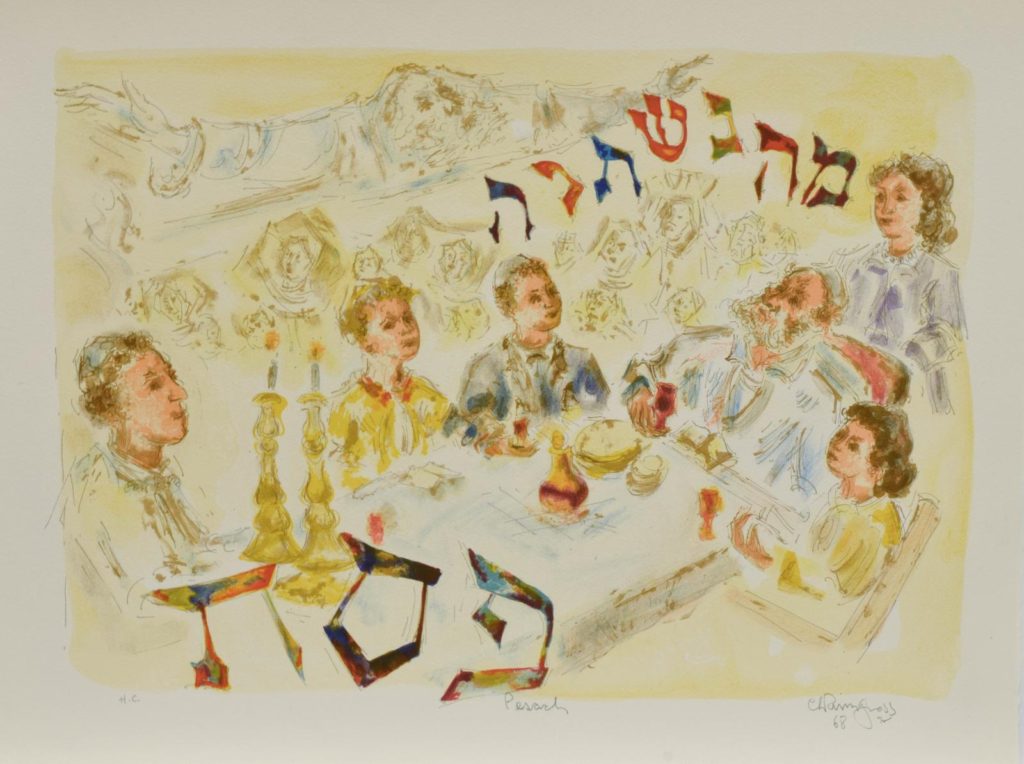Pesach
Chaim Gross (1904-1991)
United States
Lithograph, 1968
Passover, or Pesach, is a seven-day festival that marks the beginning of spring and recalls the Exodus of the Jews from Egypt. The Passover seder, meaning order, retells the story of the exodus from Egypt and rich symbolism appears throughout. The Passover seder is modeled after the ancient Greek symposia, where food and wine were a cause of much of the joy found in these gatherings. The Torah commands the Jewish people to teach and retell the Passover story to the younger generations. Many elements of the seder are geared towards children: the afikomen hunt (a scavenger hunt for a hidden piece of matzah, which needs to be found in order to conclude the seder), the mention of four children, and the recitation of the Four Questions by the youngest child in the room.
The recitation of the Four Questions by the youngest child is found in the Jewish text called the Mishnah (redacted in 200CE). This text asks the same question four times – “How is this night different than all other nights?” – with four answers in response. This interactive recitation/song not only teaches the children at the seder, but it also reminds the adults of the significance of Passover. Mah Nishtanah is Hebrew for How is This Night Different From All Other Nights.
Chaim Gross was born in 1904 in the Carpathian Mountain region of Austrian Galicia. He spent his first decade steeped in the traditions of Orthodox Jewish life. After his parents were violently attacked by Russian troops, he fled, and by 1921 was in New York. Once there, Gross studied at the Educational Alliance, the Beaux-Arts Institute of Design, and at the Art Students League. He was a prolific draftsman, painter, and printmaker, as well as a sculptor, and he was a beloved teacher as well.

